Our Story
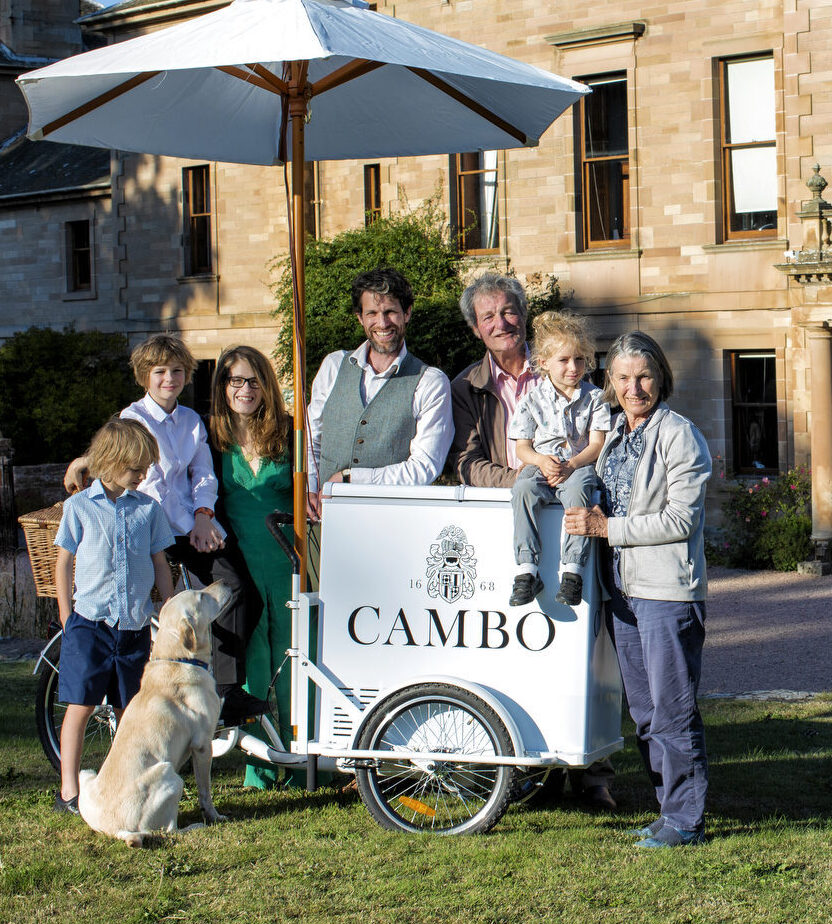
about us
Cambo Estate has been managed by the Erskine family since the late 1670s and Cambo House remains a family home to this day.
In recent years the family has started to move to a new system of governance that focuses on our mission to maintain an estate that is open to all, and do this in a way that prioritises community, sustainability and fun, while maintaining the core aesthetics of the designed landscape and creating opportunities.
Vision & Mission
So many people tell us Cambo is a special, ‘magical’ place. We strive to be responsible stewards of this extraordinary location, making thoughtful and creative decisions that will benefit the lives of our community, on and beyond the estate, for generations to come. We aim to reconsider and reshape traditional approaches to land ownership and management, led by our five guiding principles:
Community – We are more than the sum of our parts. We nurture the living heritage of the estate by encouraging strong relationships between people and place to help build an active, supportive community.
Opportunity – We aim to fulfil the traditional role of stately homes to act as an anchor for a local and global community. We feel the opportunities afforded by the estate should be shared by all those who enjoy, care for, and contribute to the life of the estate.
Sustainability – We aim to keep sustainability at the heart of all projects, new and old. We use the United Nations Sustainable Development Goals as our guide.
Aesthetics – We acknowledge our role as stewards of a place of heritage.
Fun – If it’s not fun, it isn’t sustainable!
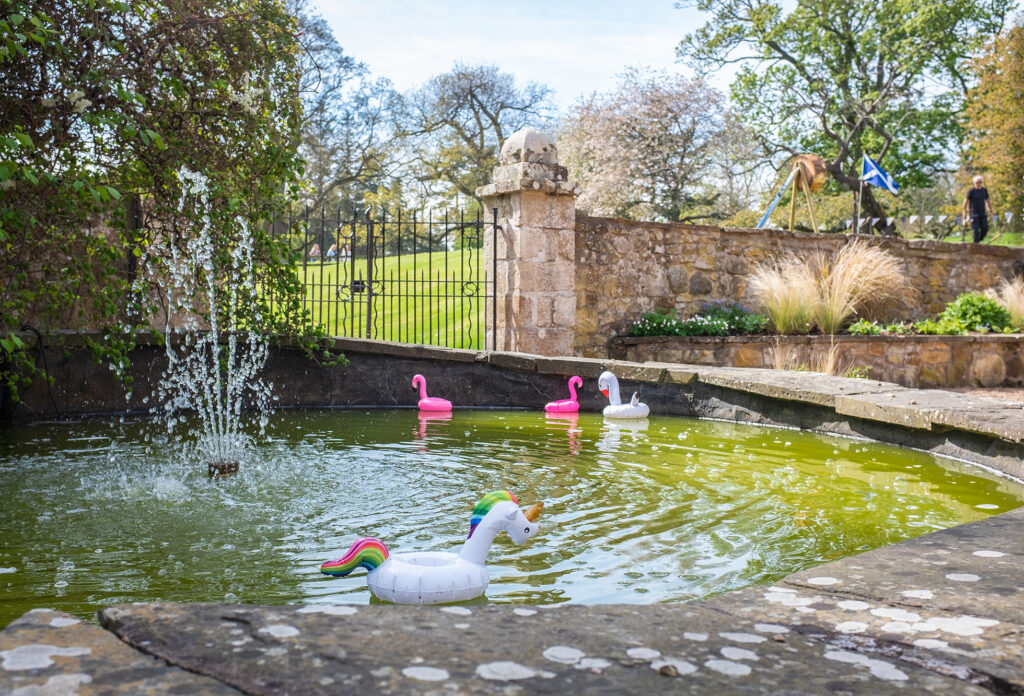
Sustainability
We aim to keep sustainability at the heart of all projects, new and old. We use the United Nations Sustainable Development Goals as our guide. The estate is working closely with the local community of Kingsbarns with the ambition of reaching net zero ahead of the national ambition for Scotland of 2045.
We are currently in the process of working towards Green Tourism accreditation. Read our Green Policy below.
Our History
The estate of Cambo was first occupied by John De Cambo who, it is thought, received it as a Norman land grant from the King in the 12th or 13th century. It was acquired by the Lindsays at some point and then sold to Thomas Merton in 1620.
In 1668, Sir Charles Erskine, Bt (d. 1677), the Lord Lyon King of Arms and brother of the 3rd Earl of Kellie, purchased the property from the creditors of Patrick Merton. The estate passed through the Erskine family to the 5th Earl of Kellie, who forfeited his lands after supporting the Jacobite rising of 1745. In 1759 Cambo was sold to the Charteris family, who bought it for their son while he was studying at St Andrews University.
Thomas Erskine, 9th Earl of Kellie (c. 1745–1828), bought the estate back in the 1790s. A successful merchant in Sweden, he invested heavily in improving the estate, building the picturesque Georgian estate farms, and carrying out extensive land drainage. He commissioned the architect Robert Balfour to remodel the house in 1795.
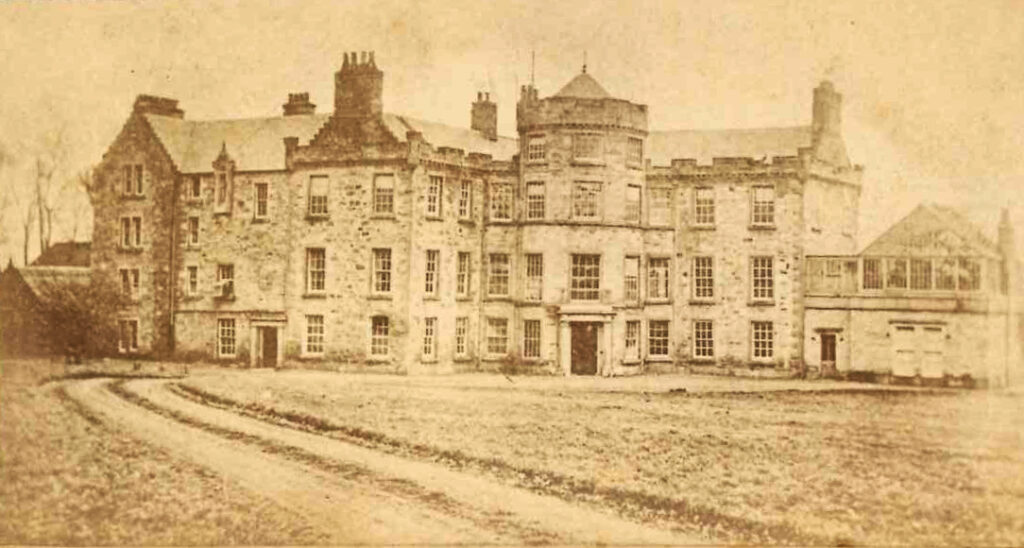
The Earl invested heavily in the estate and it is suspected that he is responsible for many of the handsome Georgian farmhouses with fanlights over their doors, the pantiled cattle buildings, the construction of the dykes and “condies” (streams buried in stone built channels) and Cambo Farm mill pond. One of these condies you can see, exposed as a water feature, running just beside the 16th & 18th green of Kingsbarns Golf Links.
The 9th Earl was married but had no heirs through his wife. However prior to his marriage he had a daughter, Anna Eglehart. He and his wife adopted all his daughter’s children and the eldest one of them became the first baronet of Cambo in 1821 as he was unable to get the knighthood transferred being illegitimate. Both the second and first baronets of Cambo were clearly keen golfers and captains of the Royal & Ancient golf club in St Andrews. Kingsbarns Golf Links clubhouse has their portraits hanging in the lobby.
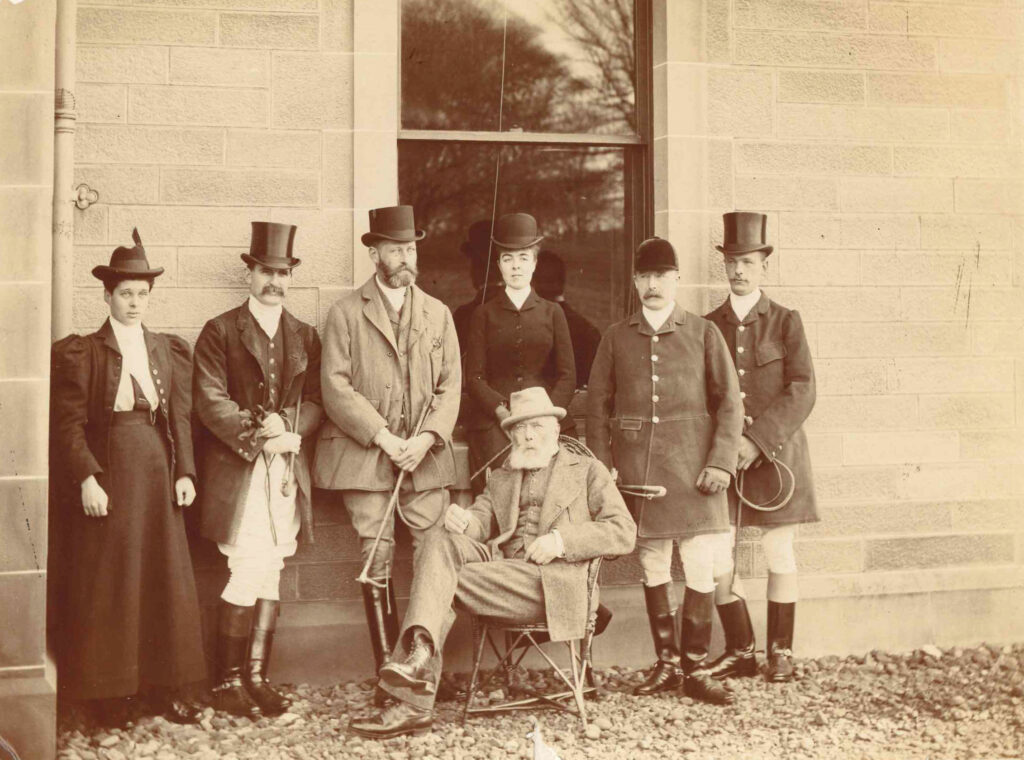
The original house was destroyed by a fire in July 1878 after a particularly raucous staff party when the family was away. After 5 different designs of what could be built from the remains, architects Wardrop & Reid recommended the remains be knocked down and an entirely new design was suggested. The only instruction from their employer was to ensure that the house was bigger than Balbirnie, the family house of the Erskine’s friends, the Balfours.
From around 1918 to 1945 the estate was run by the formidable Sir Thomas. So brave he’d “fight his own shadow” and so fearsome employees and children would stay well away. He would patrol the estate on horseback and break poachers’ guns before them. A prolific woodworker, Sir Thomas would single-handedly fell and process mature trees from around the estate for his production of carts, furniture and boats.
Sir David succeeded after WW2 and came back from the Far East to run the estate. Sir David and Lady Ann Erskine started letting parts of the house in the late 1940s and during the 50s and 60s had many tenants often associated with the university. Increasingly apartments were let to students from September to June with holidaymakers in July and August.
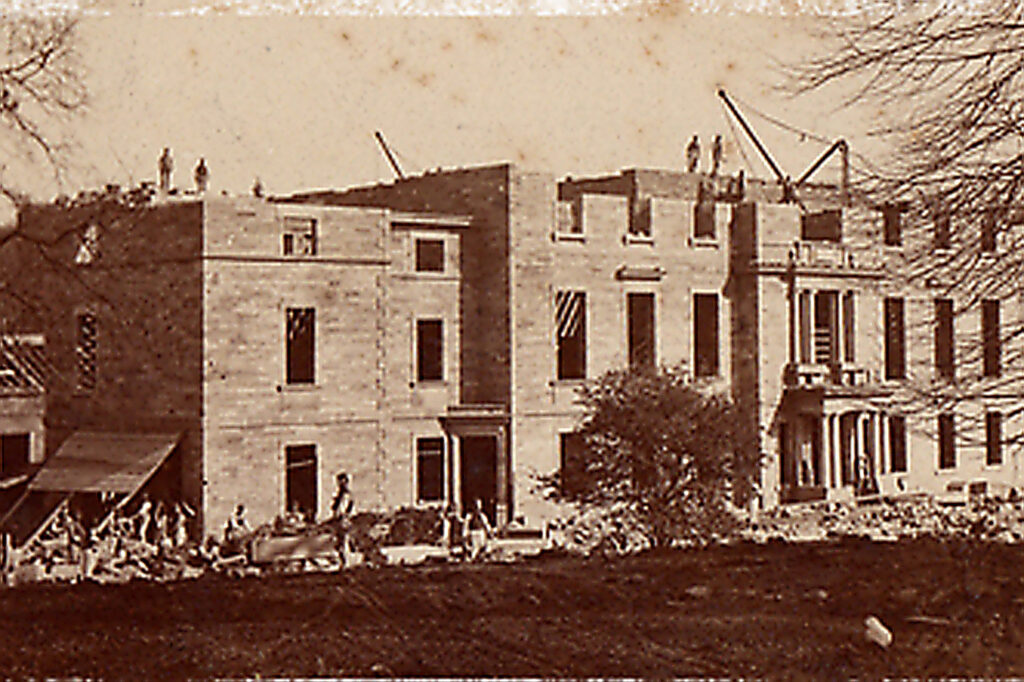
In 1976, Sir David handed the estate on to his eldest son, Peter, and his wife Catherine. By the mid 1990s letting to students had ceased and serious investment in upgrading the apartments took place before the Cambo of today was born.
Peter and Catherine have worked tirelessly to make Cambo House not just a successful accommodation business but to turn the estate and gardens into a community hub. The foundation of the Cambo Heritage Trust charity and subsequent stables renovation, provides a first class visitor attraction with inclusivity and education as its guiding principles.
In 2015, the family started to move towards a new system of governance for the estate, transitioning away from primogeniture with the creation of the Cambo Trust. The objectives of the Trust are to maintain an estate that is open to all and to do this in a way that prioritises community, sustainability and fun.
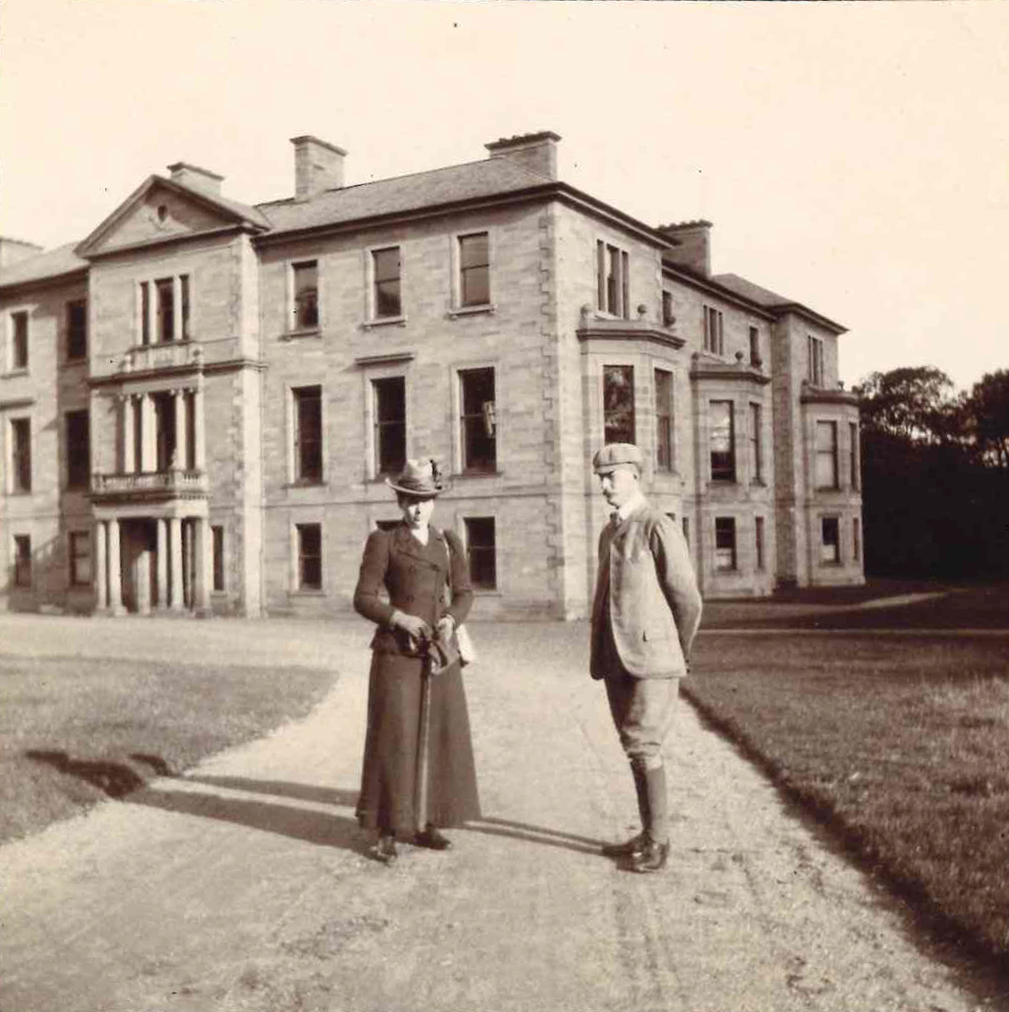
In 2016, Peter’s eldest son Struan and his wife Frances took over the running of the estate and built Cambo House’s reputation as an unrivaled wedding venue. In 2021 Struan and Frances stepped down from running the estate and James Erskine was appointed by the Trust to take the reins while Gill Erskine was appointed to further develop the governance structure.
After six years of operating as a trust, The Cambo Trust became a legal entity in 2022 and is now the body responsible for decision making at Cambo. The Trust is guided by five principles: community, opportunity, heritage, sustainability and fun.
We hope that by making these changes now, listening and adapting as we go, we will help to bring more voices, representation and equity to the future of this wonderful estate.
